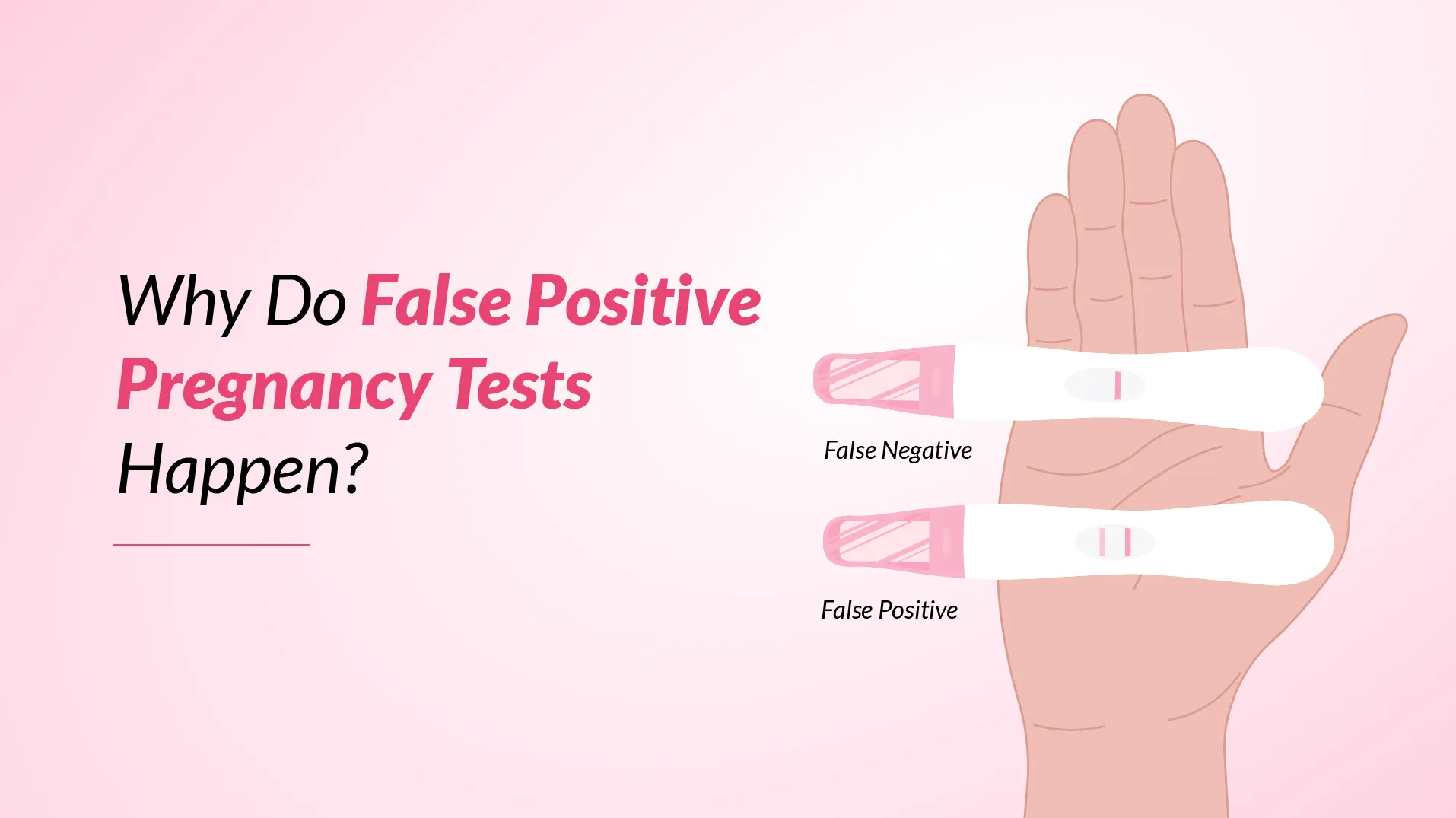Getting a pregnancy test positive result can trigger intense emotions – from excitement to anxiety. However, sometimes, these positive results aren’t accurate, leading to what doctors call a false positive pregnancy test result.
False positive pregnancy tests happen more often than many people realise. This situation can be confusing and emotionally challenging for anyone trying to conceive or track their reproductive health.
This comprehensive guide explains the various causes of false positive pregnancy tests when to take a pregnancy test for accurate results, and what steps to take if you suspect a false positive result.
Also read: How Soon Can a Pregnancy Test Be Taken After Implantation?
What Does False Positive Pregnancy Test Mean?
A false positive pregnancy test happens when a test indicates pregnancy even though there is no viable pregnancy present.
When someone takes a pregnancy confirmation test, the test strip reacts to hCG levels in the urine. However, several factors can cause the test to detect hCG-like substances or actual hCG when there isn’t a viable pregnancy, leading to a false positive result.
To understand false positive results better, it’s essential to know what the test is measuring:
- The test strip contains antibodies that specifically react to hCG
- These antibodies create a visible line when they detect the hormone
- The control line confirms the test is working properly
- The test line signifies the presence of hCG
False positive results can be particularly distressing for those trying to conceive or those who aren’t planning a pregnancy. While home pregnancy tests can be reliable, they aren’t perfect.
The accuracy of pregnancy tests depends significantly on proper timing and correct usage.
What Causes False Positive Pregnancy Tests?
Several factors can trigger a false positive pregnancy test result, ranging from biological conditions to technical issues with the testing process.
Chemical Pregnancies
A chemical pregnancy occurs when fertilisation takes place, but the pregnancy ends very early. The body produces enough hCG to trigger a positive test result, but the pregnancy isn’t viable. This is one of the most common causes of false positive results.
Medications and Hormones
Certain medications containing hCG or similar hormones can affect test results. These include:
- Fertility treatments and medications
- Some anti-anxiety medications
- Specific hormone therapies
- Certain prescription medications
User Error
Incorrect test usage often leads to false positives. Reading the test after the recommended time limit or using an expired test can show inaccurate results.
Medical Conditions
Some health conditions can cause elevated hCG levels, including certain ovarian cysts and rare tumours. These conditions require medical attention and can interfere with test accuracy.
Evaporation Lines
When urine evaporates on the test strip, it might leave a faint line that can be mistaken for a positive result. This commonly occurs when reading the test beyond the recommended timeframe.
Ectopic Pregnancy
While technically a pregnancy, an ectopic pregnancy occurs outside the uterus and isn’t viable. It produces hCG but requires immediate medical attention.
Recent Miscarriage or Abortion
hCG levels can remain heightened for several weeks after a pregnancy ends, potentially causing a false positive result on subsequent tests.
When Can I Take a Pregnancy Test?
The timing of a pregnancy test can have a huge impact on its accuracy. For getting the most accurate results, doctors recommend waiting till a missed period to take a pregnancy test. However, many modern tests can detect pregnancy earlier. Here are the optimal testing timeframes:
- First day of missed period: 95-99% accuracy
- One week after the missed period: Highest accuracy rate
- Early morning testing: Most concentrated hormone levels
- 14 days after conception: Possible early detection
- 21 days after unprotected intercourse: Reliable results
For those who can’t wait until a missed period, it’s important to understand that testing too early can lead to disappointment or confusion. The body needs time to build up detectable levels of the pregnancy hormone hCG. If testing early yields a negative result but pregnancy is still suspected, waiting a few days and testing again is recommended.
How to Avoid False Positive Pregnancy Tests
Taking accurate pregnancy tests requires attention to detail and proper technique. Individuals can significantly reduce the likelihood of getting misleading results by following specific guidelines.
Essential steps for accurate testing include:
- Use first-morning urine for optimal hormone concentration
- Check the expiry of the kit before using it for any test
- Keep test kits in a cool and dry place away from direct sunlight
- Read instructions thoroughly before beginning
- Set a timer to check results within the specified window
- Use clean, dry collection cups if required
- Avoid drinking excessive fluids before testing
What to Do After a False Positive Pregnancy Test
Receiving a false positive pregnancy test can be emotionally challenging, but there are clear steps individuals can take to move forward. The first priority should be scheduling an appointment with a doctor for professional confirmation and guidance.
Important steps to take include:
- Schedule blood tests to measure exact hCG levels
- Discuss any medications or health conditions with the doctor
- Consider scheduling an ultrasound if appropriate
- Document test results and symptoms for medical records
- Wait 48-72 hours before retesting if desired
For those experiencing emotional distress, speaking with a counsellor or joining support groups can provide comfort and understanding. These resources are particularly helpful for individuals who have been trying to conceive or those who have experienced previous pregnancy losses.
Conclusion
False positive pregnancy tests, while disappointing, represent a common occurrence that many people face during their reproductive journey. Understanding the various causes, from chemical pregnancies to medication interactions, helps people approach pregnancy testing with realistic expectations and better preparedness.
Accurate results depend heavily on proper timing and careful attention to testing procedures. People who follow the recommended guidelines, use morning urine samples and read results within the specified timeframe significantly reduce their chances of getting misleading results.





























